| home films writings | ||
| writings of Peter Tammer |
| Greening Mars |
Late in 2023 the U3A Kyneton group got me back to do a show-and-tell following from “Beginnings” which I’d presented earlier in the year. It went something like this: |
|
Well folks, let us consider the issue of putting a greenhouse on the surface of Mars! I imagine you’re wondering why we should bother to do such a silly thing? |
|
|
Earth is full of life and Mars has none as far as we know, and if there is any life there at all it’s microscopic and a long way from home. Earth has far too many people and Mars has none! ZERO POPULATION on Mars, only a few robots so far, courtesy the US who have landed about six amazing robotic rovers and who currently plan to have people land on Mars 20 or 30 years from now. There’s one other rover, Tianwen-1, which was recently landed by China. Some hugely famous and intelligent people have suggested we should start “greening” Mars, i.e., make it habitable. Build greenhouses there, grow plants, all sorts: veggies, grasses, shrubs and trees, make it a bit more like Mother Earth. There are some advantages on Mars. No real estate agents and no land tax… anyone who plants a flag up there can have it. The USA have planted flags on the Moon and they have landed rovers on Mars, so they probably think it belongs to them. China might like to contest that, but so far no wars have broken out on Mars, despite it being named after the god of war. Earth has fires, floods, earthquakes and other volcanic action, while Mars is relatively quiet and stable, just a few minor issues relating to “weather”. There are dust storms and radiation… well, those Martian dust storms can be severe. As Mars has no magnetosphere to shield the planet there’s plenty of radiation. |
|
From Arizona State University: |
|
I was quite surprised to find it also averages about 1% water vapour. It clearly does need GREENING! It needs plants! Plants could use that carbon dioxide to make oxygen, to increase the oxygen in the atmosphere… but how to get started? Being a good ally of the US perhaps we Aussies could make a contribution by establishing a little greenhouse on Mars to start the greening process. We could certainly plant veggies and other plants on Mars but that would require a lot of heavy lifting. This “heavy lifting” is not about lifting yourself out of your armchairs, this is about getting stuff into space! There are two main sorts of spacecraft which launch objects such as satellites, people and supplies for the International Space Station, or for launching much larger payloads like Lunar Modules or Planetary Probes into space. Some are moderately small rockets (but really, they are quite large) and then there are those called “heavy lift” spacecraft. Let’s start with the not-so-heavy lifters: Let’s say you want to get one tonne of material into orbit around the Earth. One “tonne” is 1000 kg, (Footnote 1) You will need a rocket which will position the object in orbit about 400 kilometres above the surface of Mother Earth. |
|
International Space Station |
|
 |
|
This extraordinary multinational spacestation is one of the greatest achievements in the history of human endeavour. The International Space Station (ISS) has been described as the most expensive single item ever constructed. The immense cost of building it in space was shared by 15 nations, with the USA providing 50% of the entire cost. The ISS took 10 years and more than 30 missions to assemble. It is the result of unprecedented scientific and engineering collaboration among five space agencies representing 15 countries. |
|
As of
2010, the total cost was US
$150 billion. This includes NASA's budget of $58.7 billion ($89.73 billion in 2021 dollars) for the station from 1985 to 2015, Russia's $12 billion, Europe's $5 billion, Japan's $5 billion, Canada's $2 billion, and the cost of 36 shuttle flights to build the station, estimated at $1.4 billion each, or $50.4 billion in total. |
|
It all started in November 1998 when they began by sending a single module into space, the Zarya Control Module, orbiting the Earth about 400 km above us. The Zarya Control Module was launched aboard a Russian Proton rocket from Baikonur Cosmodrome, Kazakhstan. Zarya (translates to "sunrise") supplied fuel storage, battery power, rendezvous and docking capability for Soyuz and Progress space vehicles. |
|
 |
|
Over a period of 12 years many other modules were launched and joined together to create the space station which has now been running for about 20 years and still has some time to go before it will eventually be “decommissioned”. It’s an intricate assembly of modules and other items including docking ports, 2 robotic arms and solar panels. The interior of the assembled modules is a jumble of equipment and wiring. It’s not a pleasant place to live in but many people compete for the opportunity. Some would pay millions for the chance to stay there for a few months as space tourists. |
|
Living conditions aboard the ISS… |
|
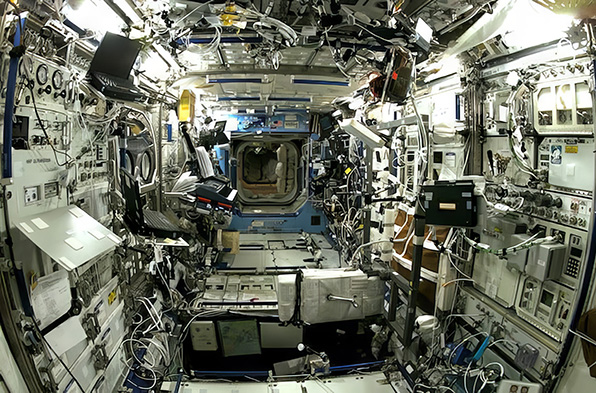 Click image to go to 360° image. And then within that image, click and drag to tilt and pan manually. |
|
Imagine
living in this environment for 6 months? |
|
How is the ISS supplied? |
|
Resupply missions typically use the Russian Progress spacecraft, European Automated Transfer Vehicles, Japanese Kounotori vehicles, and the American Dragon and Cygnus spacecraft. But if you want to go to the Moon or if you wish to send large objects into orbit such as the separate modules for the ISS you need “super heavy lift” rockets like the Saturn V, the huge rocket built by NASA to take the first 3 men to the moon in 1969… Neil Armstrong, Buzz Aldrin, and Michael Collins who stayed in the Apollo 11 command module, orbiting around the moon while Neil and Buzz were on the surface of the moon, moonwalking. The Saturn V rocket was 363 feet tall. That’s about the height of a 36-story building, and 60 feet taller than the Statue of Liberty. |
|
Saturn V |
|
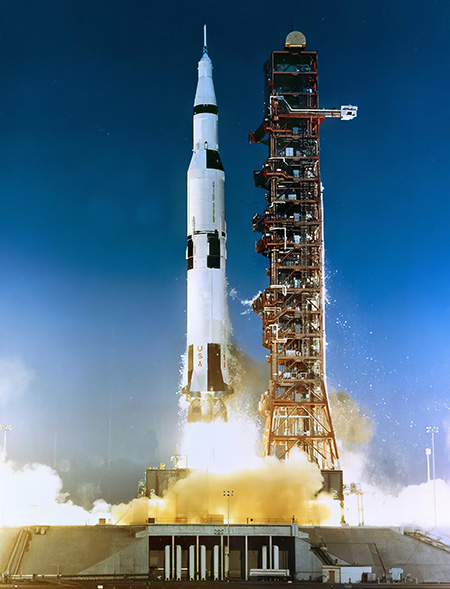 |
|
Compare
Saturn V with this 36 storey building in Box Hill (Melbourne): |
|
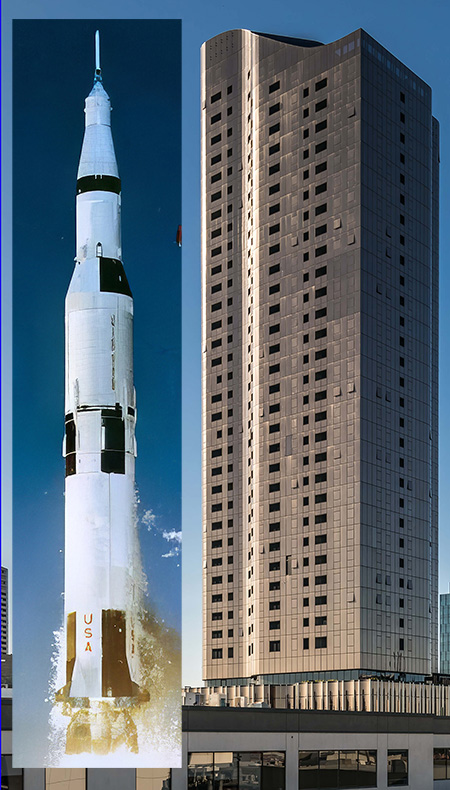 |
|
What was the payload of the Saturn V going to the moon? |
|
The Saturn V could launch about 43,500 kilograms (50 tons) to the Moon. 17 Sept 2010 |
|
It could also launch about 130 tonnes into Earth orbit. That's about as much weight as 10 school buses. Here’s a range of super heavy lift vehicles including Saturn V: |
|
 |
|
This chart shows a wider range including earlier, much smaller lifters:. |
|
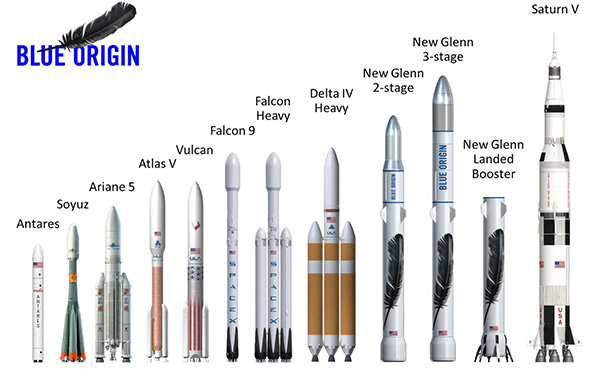 |
|
Let’s go back to the issue of sending supplies to the ISS including the delivery of food, water and goods. There are two variants of the Dragon spacecraft: The Crew Dragon, a spacecraft capable of ferrying four crew members, is pressurised with breathable air. And the Cargo Dragon, not pressurised, is used to carry freight to and from space. |
|
| 6,000
kg to orbit 3,307 kg to ISS (up to 2,507 kg pressurised and up to 800 kg unpressurized) 2,507 kg return cargo 800 kg disposed cargo |
|
The spacecraft consists of a reusable space capsule and an expendable trunk module. So let’s consider a cargo of just 3307 kg intended to supply the ISS with goods, I think that’s quite a small payload to deliver to the ISS. A super heavy lifter could carry 20 times more weight into orbit, such as lunar modules or modules for spacecraft designed for travel to Mars. Heavy lift: 3307 kg v. Super heavy lift: 77,000 kg. Consider that a large road vehicle such as a 2023 Range Rover, weighs approx. 3500 kg. The super heavy rocket could lift the weight of 20 of these in one launch! |
|
 |
|
So it’s incredibly powerful, exactly what is required for getting material out of Earth Orbit, to reach the Moon or travel to Mars for large scale works. BUT IT COMES AT A COST… IT’S NOT CHEAP. Let’s say I want to send a bottle of wine to a favourite astronaut on the ISS for a birthday. I buy a one litre bottle of Baily and Baily wine for $8 or so. Not a bad low budget wine. I send it to Elon and ask him to put it on board next cargo flight to the ISS and he sends me back a bill for US $23,300. The cost of launching a Falcon 9 and Dragon capsule mission to the ISS is about $140 million. Given a payload of 6,000 kg, = $23,300 per kg. In Aussie dollars that would be $35,780.64 per kilo or litre. Given that the cost of sending my gift is so high, I could easily afford to send a bottle of Grange, or an expensive champagne for that same heavy lifting price, but I can’t send the champers because it would make quite a mess of the cabin when uncorked in the ISS. But to send them even a litre of water or milk would cost exactly the same: AUD $35,780 So let’s extrapolate this a bit: Let’s say we want to send an object weighing 1000 kg to the ISS: $35,780,000. It would cost approximately $36 Million dollars for 1 tonne. A few years ago Elon sent his Tesla Roadster into space:
|
|
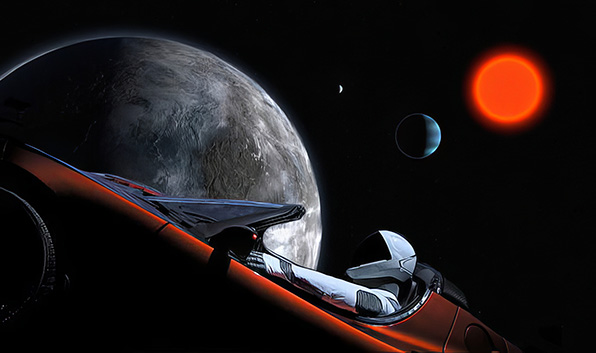 |
|
Well, he is a bit of a show off, isn't he! |
|
Now, my little Betty Barina is nearing her use-by date, she weighs about 1000 kg, so what if I wanted to send her to space, just as Elon sent his Roadster to space… |
|
 |
|
The cost of lifting little Betty Barina into space: $35,780,000 Well I just can’t afford that, so Betty will probably end up at the wreckers. At least I’ve saved her from that miserable fate for the past 6 years!
Mars does have an atmosphere, but it’s very thin compared with ours on Earth, and mainly comprised of carbon dioxide…CO2 A molecule of carbon dioxide (CO2) is made up of one carbon atom and two oxygen atoms. Here’s a representation of a single molecule of this gas: |
|
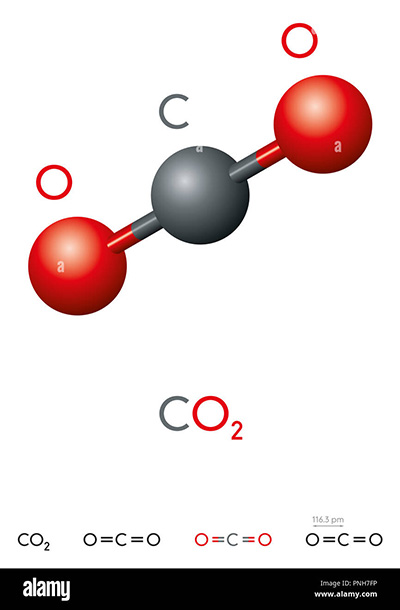 |
|
The most important thing we’ll need to do is to split those two oxygen molecules off the carbon molecule! That’s what all plants are great at doing all the time, they breathe in the carbon dioxide and they exhale/respire the oxygen. Over billions of years plants have turned Earth’s atmosphere from poisonous CO2 into about 20% oxygen. Without plants there would be no animal life on Earth and people would not be able to live on this Earth. Could our little group of Kyneton U3A people get up to Mars and build a little greenhouse there? If so we could start to turn Mars into a planet where people can live and breathe. We could grow all sorts of plants, fruit, veggies, trees, flowers and grasses… hopefully not too many weeds. I gave it quite a lot of thought and decided: why not start off “bite sized”? No need for something enormous and extravagant, not too complex, just something simple you could buy at Bunnings or Walmart, flat pack, send it up to Mars on a shuttle or somesuch. First we’ll have to purchase one. I checked out Bunnings and they have quite a nice one for about $1300 which would look great in any backyard. |
|
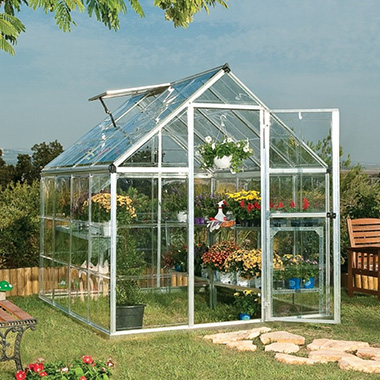 |
|
It’s not quite as attractive as this one which would cost a lot more… |
|
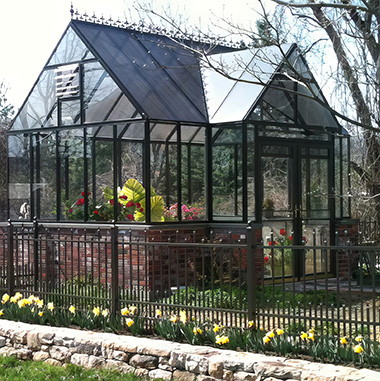 |
|
But as we’d have to transport the bricks and fencing to go with that one, I decided it’s not the one for us. And let’s face it, they are both just a bit too small. Let’s say we go with the cheaper one! It’s quite neat, it would be relatively easy to flat pack and store in a rocket. |
|
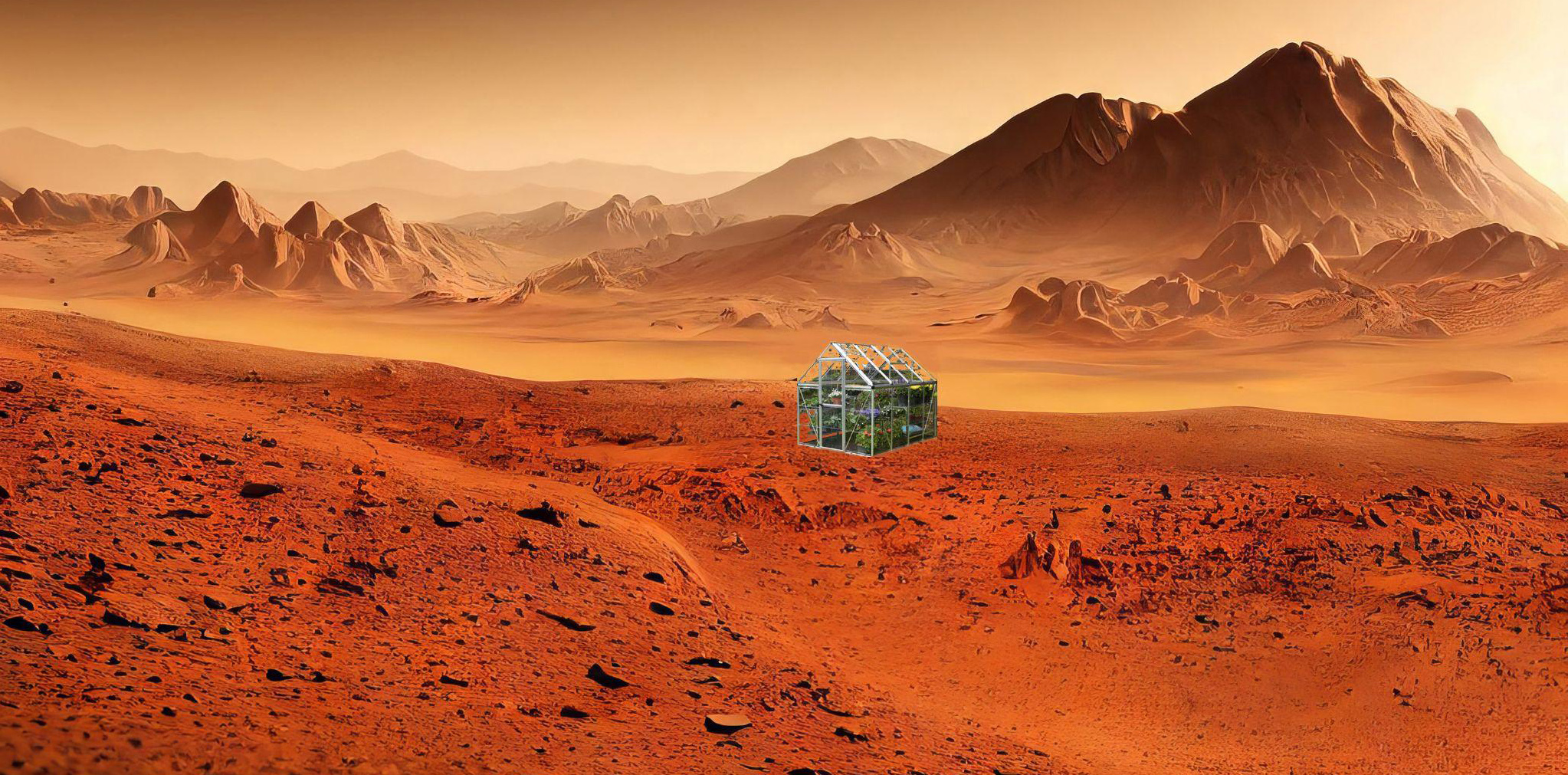 |
|
Well, you’d probably need a couple of nuclear powered Android Robots up there to assemble it and you would hope that all the required nuts and bolts would be in the package, you can’t just duck back down to Earth for missing bits and pieces. |
|
 |
|
So, excluding the cost of sending the AI robots to assemble it, how much do you think it would cost to get that one up to Mars? I’d say about $5 BILLION! Pretty darned expensive for an item we can buy at Bunnings for just $1300! You will see why it’s so expensive as we progress a little further in this presentation. But for all that cost in transportation, it’s only a tiny little greenhouse and it’s not going to provide heaps of oxygen on Mars, so we’ll need a much bigger greenhouse to kick start the Greening. Maybe this one would do? |
|
 |
|
Or this: |
|
 |
|
As you can see from these artists’ impressions, they’re thinking big. They’ve gone way past the first image I saw a few years ago with a small dome about 20m long and 10m tall. Some may be built entirely above ground but other greenhouses will be built partially in ground, or even underground. |
|
 |
|
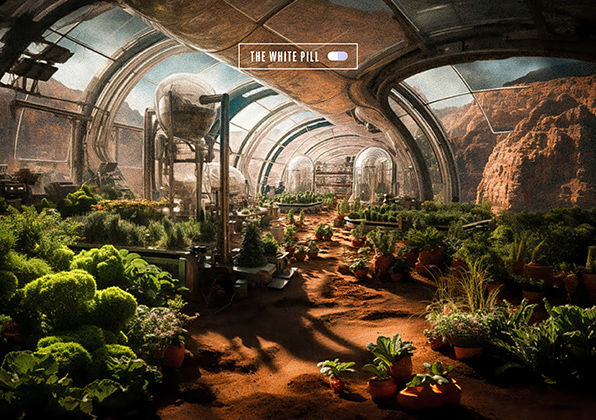 |
|
Space agency planners are also considering hydroponics in tubular shaped containers: |
|
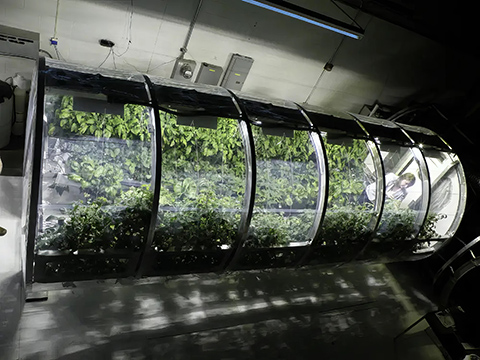 |
|
You can see how this shape gives us a great advantage for transport through space, as well as for LED lighting underground, instead of the intense radiation which floods Mars above ground. |
|
 |
|
These can also be in use while travelling through space… because they are completely self-sufficient, powered by electricity (solar or nuclear) and water would already be on board the craft as is the pressurised air. So they could be working like oxygen producers, converting the exhaled CO2 of the space travellers into breathable oxygen, all while travelling from Earth to Mars. Transporting them across from Earth orbit to Mars orbit might look something like this, you could just keep adding modules onto the basic spaceship spine: |
|
 |
|
But if we’re going to green Mars we need much larger greenhouses than anything I’ve shown you so far.
Sundrop Farms opened its first pilot facility in Port Augusta, South Australia, in 2010 (operating as Seawater Greenhouse Australia Pty Ltd). This facility was originally designed as a Seawater Greenhouse. |
|
 |
|
However, significant technology changes led to the Sundrop System, and the dissolution of the joint venture with Seawater Greenhouse Ltd. Sundrop Farms commissioned an expanded 20 ha facility south of Port Augusta in 2016. Sundrop Farms has offices in London, UK and Adelaide, Australia. In October 2016, Sundrop Farms was operating greenhouses in Portugal, the United States and had another facility planned in Australia.
|
|
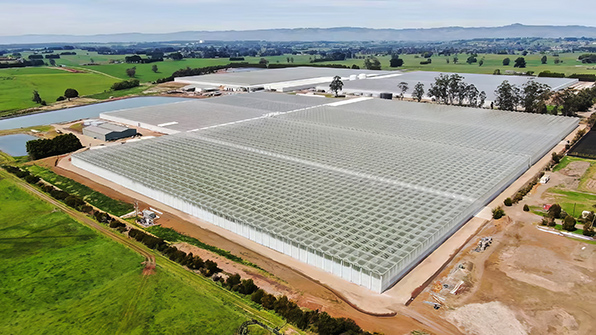 |
|
The facility at Warragul, east of Melbourne, can produce 80 kilograms of fruit per square metre. But what exactly are we going to grow when we build our super large greenhouse? Do we grow plants merely for oxygen production or for food, or both? What sort of balance would we need here? What are the constraints concerning the size of different plant varieties? Trees, shrubs, grasses, algae? We can’t really consider trees as large as Oak Trees and Californian Redwoods can we? Or even Avocado, Orange, Apple and Cherry trees? |
|
Avocado orchard |
|
 |
|
Orange orchard |
|
 |
|
How about apple trees? |
|
Apple orchard, hydroponic |
|
What allowance must we make for the depth of roots? How deep would the soil need to be to grow our plants in? How much water will we need and where do we get it from, do we get it from the Martian ice caps, if they’re not ‘dry ice’? Or can water be found hidden under the Martian landscape in artesian like storage, caves etc, such as the many varieties we have on our Earth? Just the other day I came across this article saying that water has been discovered below the surface of Mars. It would only be accessible with deep drilling and any treatment would require substantial infrastructure. |
|
Exactly what do we need? |
|
We need plentiful sunlight or LED equivalent, which requires a lot of electrical power for a farm. We definitely need lots of water. We need good soils for inground growing, or nutrients for hydroponic growing. We need CO2 to convert into Oxygen for humans to breathe. As we’ve seen, Mars has plenty of CO2 so that’s not the main issue. Let’s get back to basics… I’m definitely not against hydroponics, but I think good soils are really important. We get much of our best produce from rich soils which have taken thousands, hundreds of thousands of years to evolve. Rich farming soil does not come about from short term organic breakdown, it’s usually the result of millions of years of biological activity, thanks to lowly worms and lowly nematodes and micro-organisms… let’s not forget the work of all those other little critters. |
|
Is there any soil on Mars? |
|
This shot was taken by the rover “Curiosity” which the US landed on Mars many years ago…. 2012. It was originally set for a 2 year mission and it’s still functioning. |
|
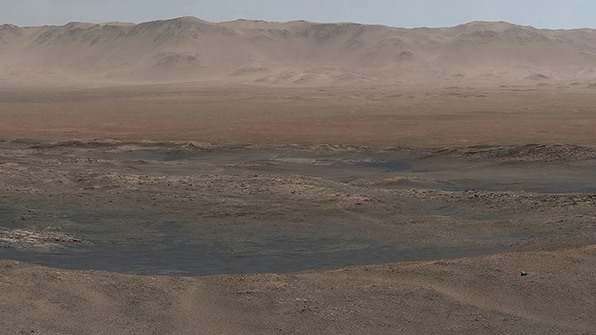 |
|
What you see in this landscape is mainly rocks and sand, there’s no organic life there. If ever there was organic life on Mars, it is extremely elusive to find, even traces of it. It’s assumed that there was once a plentiful amount of water which sculpted the Martian landscape and that therefore there might have been organisms living in that water, but they are still looking for traces of those organisms. |
|
Both of the NASA rovers currently exploring Mars — Curiosity and Perseverance — have been turning up more and more evidence of organic compounds at the planet’s surface. |
|
We humans could take life forms from Earth and establish them on Mars, but only if we make a huge effort to do so. We would need to transport some sort of modules or pods to Mars and use robots to instal these pods on the surface of Mars in preparation for the time we would send people up there. It is not going to be easy and it is not going to be cheap. It’s going to be incredibly expensive to do it, but international companies and space agencies are definitely planning to do it in the future. Mr. Musk thinks it will be done very soon, by 2040… but I think it’s a long way off. Elon is very optimistic and he doesn’t like people who think it will take a lot of time. But he does admit that “costs of transit and transport” must come down, and in this matter he has pushed the boundaries hard. He has championed the use of reusable rockets which is a huge step… he says a first stage lifter must be good for at least 10 launches. These things are being achieved so costs of launching people or material into space are becoming significantly cheaper, but it will remain incredibly expensive. |
|
EXAMPLE: |
|
The budget to get just a single rover to the surface of Mars, “Perseverance” along with its companion helicopter “Ingenuity”: |
|
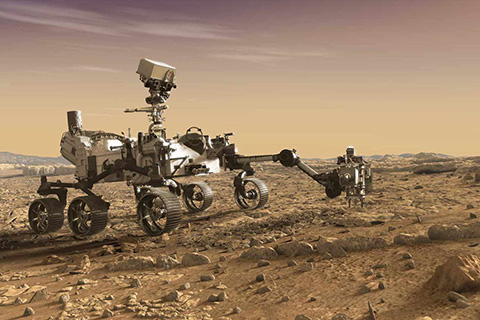 |
|
“Ingenuity” helicopter with Percy behind: |
|
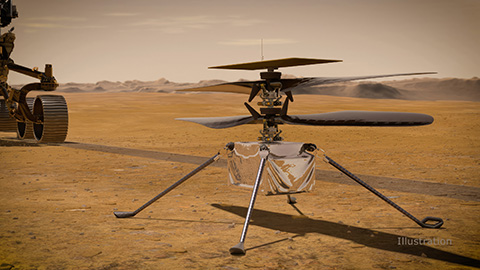 |
|
$2.75 billion was spent on the project over 11 years, including $2.2 billion for the development and building of the hardware, and $243 million for launch services. But Percy only weighed 1,025 kg. That’s about the same weight as my little Barina! Perseverance Rover is a travelling laboratory! And its little buddy Ingenuity is the first autonomous helicopter humans have flown on another planet. https://mars.nasa.gov/technology/helicopter/#Helicopter-Highlights |
|
Let’s
take a closer look at Ingenuity. |
|
 |
|
This little helicopter is solar powered! It doesn’t get its power from Perseverance which has its own nuclear power pack. Because sunlight on Mars is much weaker than on Earth, Ingenuity has to wait for enough time to elapse between flights to fully charge its battery. Perseverance has a small nuclear power pack which produces only 110 watts of electrical power which is stored in two heavy duty lithium-ion batteries. This power supply and storage should allow Percy to work on Mars for up to 14 years, although it was only designed for a minimum of 2 years, which it has now surpassed. |
|
As
of 17 January 2024, Perseverance has been active on Mars for 2 years,
10 months and 30 days since its landing. |
|
How many rovers have been sent to Mars? As of May 2021, there have been six successful robotically operated Mars rovers; the first five, managed by the American NASA Jet Propulsion Laboratory, were (by date of Mars landing): Sojourner (1997), Spirit (2004–2010), Opportunity (2004–2018), Designed to operate for 3 months, it lasted … 14 years! Curiosity (2012–present), (11 years so far!) and Perseverance (2021–present) As of 2022, 21 lander missions and 8 sub-landers (Rovers and Penetrators) attempted to land on Mars. Of the 21 landers, the Curiosity rover, Perseverance rover, and Tianwen-1 are currently in operation on Mars. How many rovers came from countries other than USA? Only one rover sent up by another nation was successful: Tianwen-1 landed the only successful non-USA lander “Zhurong”: On 22 May 2021, the Zhurong rover drove onto the Martian surface via the descent ramps on its landing platform. With the successful deployment of the rover, China became the second nation to accomplish this feat, after the United States. |
|
October
19, 2016:
The European Space Agency’s Schiaparelli failed.
The cost of that mission was approximately $ 2 BILLION. |
|
On October 19, 2016, exactly at the time when its mother ship was entering orbit around Mars, the 577-kilogram Schiaparelli lander attempted a six-minute descent onto the Martian surface, however something went wrong around the time when the main parachute of the lander was jettisoned and soft-landing engines fired.. |
|
Another
view of “PERCY”: |
|
I’m pretty sure this shot was taken on Earth. |
|
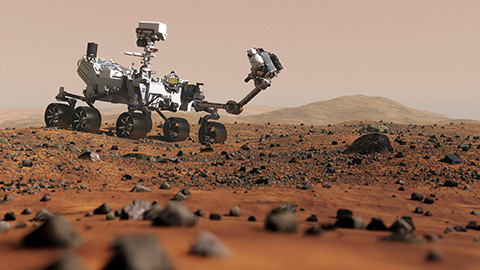 |
|
Together this rover and its little buddy represent an astonishing achievement by the mighty USA and NASA. Up till now Ingenuity has flown 71 flights. (Footnote 2) This YouTube clip shows flight 51: |
|
|
We call them “rovers” but we could also call them “robots”! |
|
These rovers are mobile mechanical devices which take instructions to do jobs which we assign to them from Earth, either by pre-programming or by redirection. We can change their programming from Earth, but that takes time. If they suffer some malfunction we might have to rewrite programmes to fix them up and get them working again. Until we give them AI to allow them to think for themselves without waiting for us to send messages with a 20 minute gap between send and receive, they must take instructions from Earth base. Although Perseverance is called a "rover' it is also a “portable laboratory”. It can sample and analyse any rocks or sands it may come across on its travels. These rovers can also take stunning photographic images, even selfies! If we extrapolate a bit, rovers like these could be used to construct living pods on Mars, but machines for that purpose would need to be much more advanced than Percy, or Curiosity or Ingenuity! Here are some ideas being discussed in preparation for colonising on Mars: |
|
Modular Pods |
|
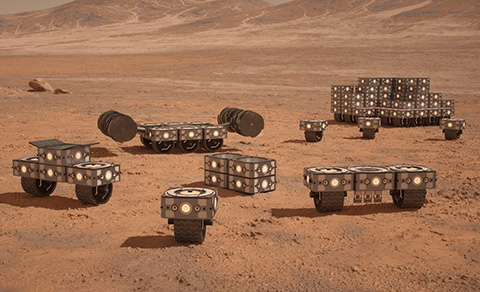 |
|
Robotic Trucks |
|
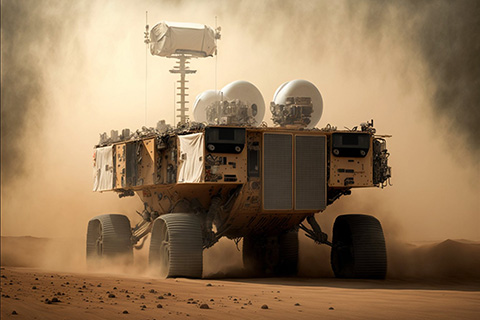 |
|
Imagine an open cut mine, completely automated, huge rock carrying trucks without any human drivers! Then imagine that there are other heavy duty machines which can construct buildings to plan without humans. Also, robotic drilling machines which can carve horizontal or vertical shafts into rock, forming tunnels and underground cavern spaces. As you can see it would be a huge leap to expand from Perseverance to such large machines. How much of a leap would be required before we get to this next stage? |
|
Colony prepared by Robots |
|
 |
|
It
all comes down to breathable air! |
|
If we don’t establish a preparation colony with greenhouses which are constructed and managed by robots, we won’t have enough oxygen for people to breathe when they finally arrive on Mars. Is there any alternative? |
|
MOXIE |
|
Perseverance also carried a little box of tricks called MOXIE with it to Mars. This entire programme of Perseverance and Ingenuity had many new add-ons for scientific investigation, one of these, MOXIE, is a tiny lab which has converted Oxygen from the predominantly CO2 atmosphere of Mars. |
|
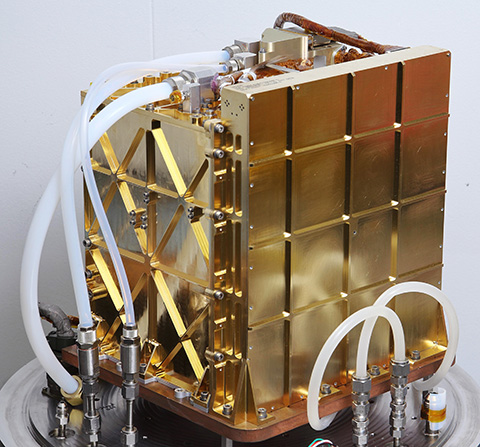 |
|
Moxie is a machine which makes OXYGEN from by stripping the oxygen atoms out of the CO2. Moxie has now been making oxygen on Mars for about 2 years How much oxygen has been made on Mars? Since Perseverance landed on Mars in 2021, MOXIE has generated a total of 122 grams of oxygen – about what a small dog breathes in 10 hours. At its most efficient, MOXIE was able to produce 12 grams of oxygen an hour – twice as much as NASA's original goals for the instrument – at 98% purity or better. Just 122 grams in 2 years! Well you know that’s a very small amount of oxygen, a small dog could only survive for 10 hours!!!! We’re gonna need a much bigger and better Moxie for people… just how large and how expensive would it be? As you have seen, our little dream of growing plants to create an atmosphere of breathable air for humans on Mars is not as easy as it first seemed. A budget sized greenhouse from Bunnings is just not going to fill the bill! |
|
 |
|
We would need to scale it up bigtime! Here’s an artist’s futuristic design for a large scale greenhouse dome: |
|
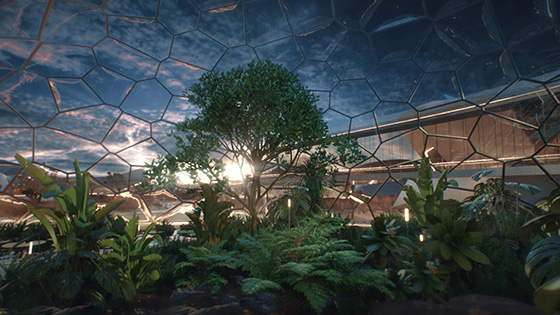 |
|
This one is shaped like a glass pyramid rather than a dome! |
|
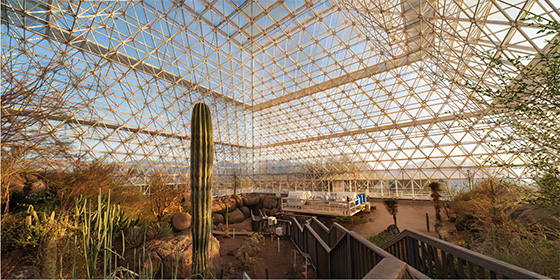 |
|
Most futuristic artists seem to prefer domes rather than pyramid shaped greenhouses for Mars. Each style has advantages and disadvantages in transportation and construction. But whichever style is used for a colony on Mars the expense would be enormous, far greater than anything humans have ever attempted in space. Until now, the ISS funded by a consortium of nations is one of the biggest and most expensive projects ever undertaken by humans. To transport all the modular materials and to construct a single large scale greenhouse enclosure would be vastly more expensive than the ISS. |
|
So why are we even talking about it? Quoting from “The King and I”... |
|
"Is a puzzlement!" |
|
At this time of my life, at 81, I see a world in crisis. In my daily life I am bombarded with bad news from all over the globe. So many different situations appear to be out of control. All our climate patterns have been disrupted by global warming. It doesn’t seem to matter whether it was caused by humans or not, to me it seems it’s impossible to reverse. Swiss glaciers have lost 10% of their ice over the past two years. That is an incredible percentage, on top of the huge losses experienced over the past 90 years. |
|
From here: |
|
“Switzerland’s 1,400 glaciers have lost more than half their total volume since the early 1930s, a new study has found, and researchers say the ice retreat is accelerating at a time of growing concerns about climate change.” |
|
These images show the lengths the Swiss people are going just to slow down the rate of melting ice, to protect their glaciers. That enormous effort may be having some effect but it is not stopping the melt, just slowing it down. |
|
 |
|
For me the most important question is this: Is it possible to replace the ice which the melted glaciers of Switzerland have lost over the past 90 years? Can we reverse the losses of ice caps and glaciers anywhere? Can we reverse the losses of polar sea ice? Although I want to be positive about this mighty endeavour, to me it seems utterly futile. |
|
 |
|
Some nations like Japan and Iceland experience massive earthquakes or tsunamis. These forces are not within the capacity of any humans to control. The Icelandic people cannot save the town of Grindavik from their erupting volcanoes and the Japanese people could not stop the tsunami which wiped out Fukushima. (Footnote 3) |
|
It began
on 11 March 2011, when the most powerful earthquake ever recorded in
Japan struck off the country's eastern coast. The 9.0-magnitude quake was so forceful it shifted the Earth off its axis. It triggered a tsunami which swept over Japan's main island of Honshu, killing more than 18,000 people and wiping entire towns off the map. |
|
Alongside these unstoppable forces of nature we also have wars, not huge wars such as WW1 or WW2, but terrible warfare in many countries, devastation for millions of people in war zones such as Ukraine, Gaza, Myanmar, and many African Nations. These man-made wars result in great loss of life, huge numbers of people maimed for life, starvation and disease, the massive destruction of homes and infrastructure, all of these accompanied by a total breakdown of medical services in those regions. The mass migrations from North Africa to Europe, from Latin America to USA seem to be unstoppable. European nations can’t stem the flow across the Mediterranean any more than the USA can stem the increasing flow of refugees from so many Latin nations coming through Mexico. Enough! There are far too many crises for me to go into, the list is so long. But in the face of all this I am deeply puzzled! Why go to Mars? Why go to the expense of creating a colony for a small number of humans on Mars in the distant future when we have much greater needs here on Earth right now. There are plenty of deserts on Earth we could green if we just want to test our capacity for greening. And while Mars has virtually no water, here we have plenty of water, a lot more than we would like in some places, and not enough in some other places. But at least we don’t have to create oxygen for the air we breathe! That leads me to talk about a little programme which I discovered a few years ago, “Thinking Huts”, a visionary project to build “printed” schools in Madagascar. This programme originated with a lovely young woman named Maggie Grout. |
|
 |
|
Maggie started her visionary project when she was only 15 ! So far one prototype building was completed, April 14, 2022. |
|
Printed School in Madagascar |
|
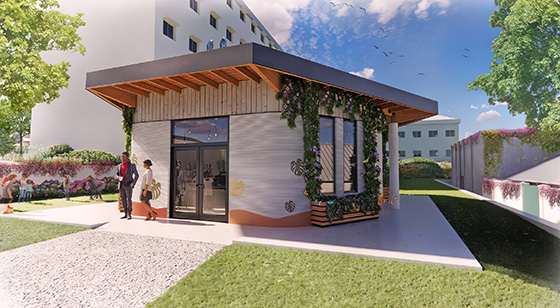 |
|
That first building project cost approximately $400,000. Only 400 thousand dollars!
Not Millions! Not Billions!
Not Trillions! |
|
Interior Printed School |
|
 |
|
The next stage of the Thinking Huts project is to create a “honeycomb” array of such printed school buildings. |
|
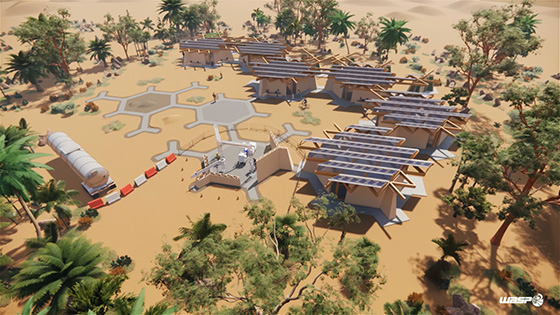 |
|
Remove the trees from this picture and the huts would look a lot like a Martian colony without a protective dome, but to build them in any country on Earth would cost just a tiny fraction of building on Mars. To build just a single hut on Mars with a domed greenhouse to supply breathable air would cost TRILLIONS! Why are so many trillions of Dollars, Euros and Yuan being committed to MARS programmes? Why do humans think it necessary to colonise other planets? Why do we feel the need to seed the Universe? Haven’t we placed enough space junk in orbit around the Earth? Haven’t we left enough junk on the surface of the moon? Already we’ve left quite a few dead probes and rovers on Mars. In just a few years the ISS will be decommissioned and returned to Earth to be burned up in the atmosphere! The new euphemism for this trashing is “de-orbiting”. |
|
 |
|
Yes, that is what is going to happen! In just seven years this magnificent achievement of our time is going to be trashed! From the Washington Post: |
|
In January 2031, the station — which launched in 2000 and is 356 feet (109 meters) from end to end — will plunge into the waters of Point Nemo, an uninhabited part of the southern Pacific Ocean, where spacecraft and satellites go to die. Or, as it’s put in NASA’s newly published transition report, to “de-orbit.” |
|
Despite all the incredible construction of components which make up the entire ISS and launches to assemble them over many years in space, despite all those successful missions by astronauts of many nationalities over more than twenty years, despite the miracle of getting it all together in the first place, this magnificent structure is just going to burn up in the atmosphere of our planet! And just in case you’re wondering: |
|
from SCIENTIFIC AMERICAN, NOVEMBER 21, 2023
NASA May Pay $1 Billion to Destroy the International Space Station. |
|
When will we ever learn? |
|
Peter Tammer, 28.02.2024 |
|
A very special thank you to Alix Jackson for his fine work animating the robots dancing around the greenhouse on the surface of Mars. Also to my good friend Bill Mousoulis for all the work he puts into presenting my writings. What can one person achieve without the assistance and patience of friends? |
|
|
|
Footnote 1 |
|
All measurements in this essay are in metric, not imperial, readings. |
|
Footnote 2 |
|
On January 18, 2024, Ingenuity's rotor blades were damaged while landing on its 72nd flight, permanently grounding the helicopter. |
|
Footnote 3 |
|
Re FUKUSHIMA
TSUNAMI, The
earthquake moved Honshu 2.4 m (8 ft) east, shifted
the Earth on its axis by estimates of between 10 cm (4 in) and 25 cm (10 in), increased Earth's rotational speed by 1.8 µs per day, and
generated infrasound waves detected in perturbations of the low-orbiting Gravity
Field and Steady-State Ocean Circulation Explorer satellite. Initially,
the earthquake caused sinking of part of Honshu's Pacific coast by up
to roughly a metre, but after about three years, the coast rose back
and then kept on rising to exceed its original
height. The
Earth's axis shifted by estimates of between 10 cm (4 in) and 25 cm (10
in). This
deviation led to a number of small planetary changes, including the length
of a day,
the tilt
of the Earth,
and the Chandler
wobble. The speed of the Earth's rotation increased, shortening the day by 1.8 microseconds due to the redistribution of Earth's mass. |
|